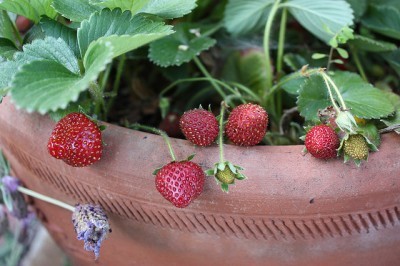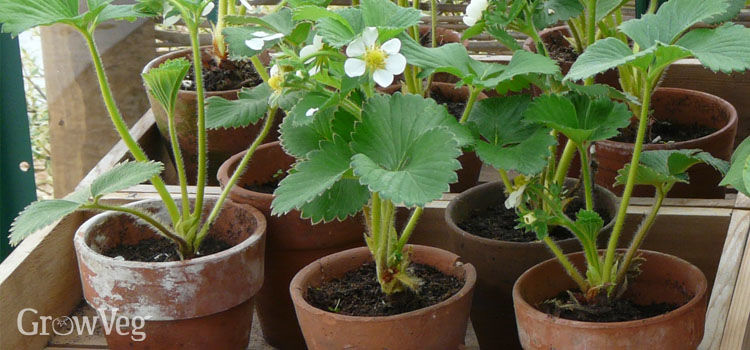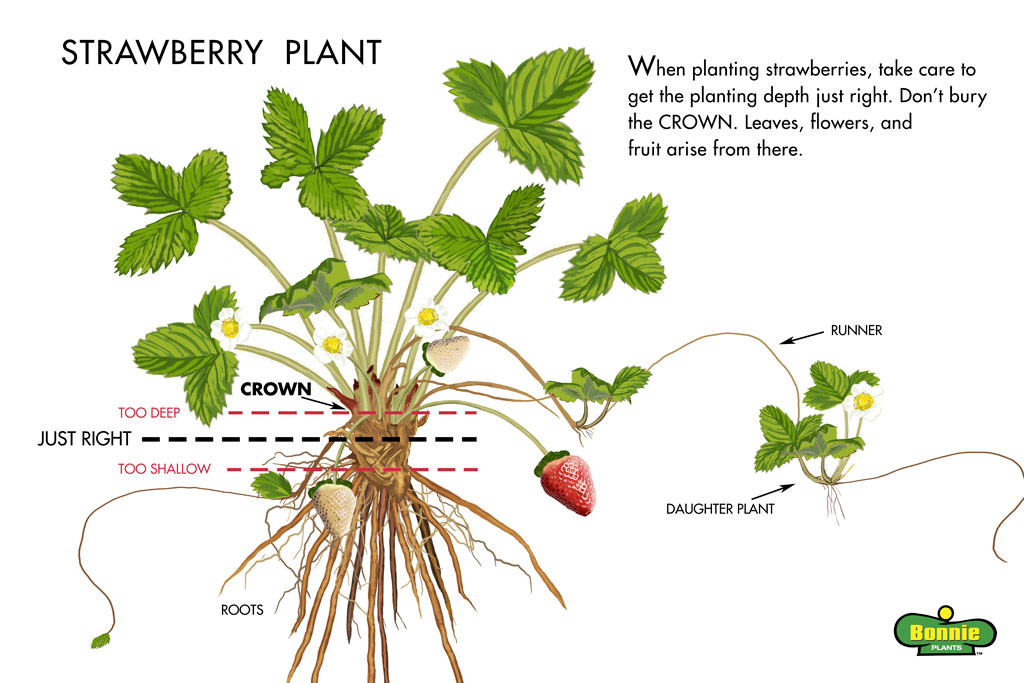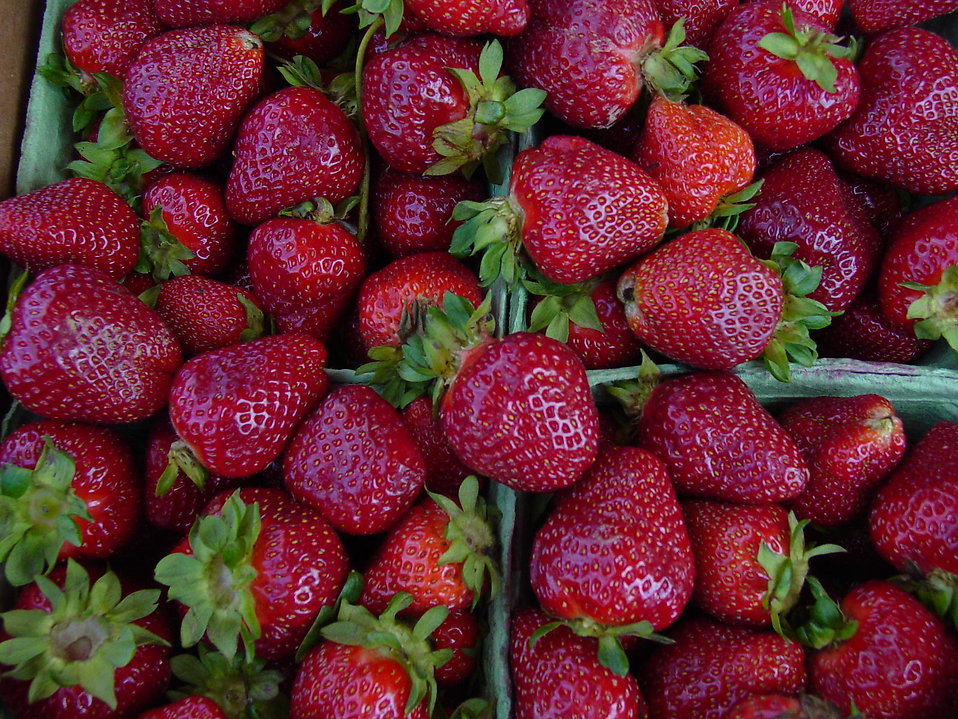
Nothing says summer like fresh strawberries from the garden. But if you’re limited on growing space, you might want to try growing them in pots on your patio, porch, or balcony. If you have a sunny spot with 6-8 hours of sunlight per day, you can grow strawberries. You can even supplement them with artificial light and grow them indoors. If you want to give potted strawberries a try, here’s how to do it!

Choose Your Variety
There are three main categories of strawberries; all delicious and good for you. Day neutral berries can bear fruit throughout the summer, June to September. They like cooler temperatures, so if kept outside they won’t flower or give you berries during the hotter times. Ever-bearing strawberries will give you two crops, one in the spring and one in the fall or late summer. June-bearing will yield one large crop per year, during about a 3 week period (most often in June). The best variety for you will depend on your conditions and preference. For indoor growing, for example, red alpine strawberries are usually the ideal choice because they tolerate shade better than others. If you want to use hanging baskets, try Brighton.

Time Your Planting
Plant your strawberries early spring if you live in zones 1 to 5. In warmer climates, you can plant them in the fall. If you plan to grow them inside, you can start any time.

Prepare the Soil
The soil in your containers should be between 5.3 and 6.5 on the pH scale, but slightly lower or higher is sufficient. A controlled-release fertilizer is always a good idea.

Proper Planting
Your strawberry plants should be trimmed of any older leaves. You should also remove any runners and flowers, and trim the roots to about 4 or 5 inches. If there is any damage to the plant, cut it off. Don’t plant strawberries where potatoes, tomatoes, peppers, or eggplants have been grown before, as they tend to host vertericilium wilt.

Ongoing Care
Check your newly-planted strawberries daily for moisture. They need frequent watering until they take root, but at that point you can cut back to watering when the top inch of soil is dry. It’s usually best to water in the morning, so the leaves can dry quickly.
For about 6 weeks after you plant, remove all blossoms on your overbearing or day-neutral plants. Plants need time to establish themselves before using that energy on fruit production. Fertilizing can be done once a month. Be prepared with a good insecticide to take care of aphids and spider mites.


What kind of fertilizer for strawberries grown in a pot? Thank you.
I like to use a combination of equal parts nitrogren, potassium, and phosporus. Make sure the soil is well-draining, or root rot could kill your berries! I hope this helped!